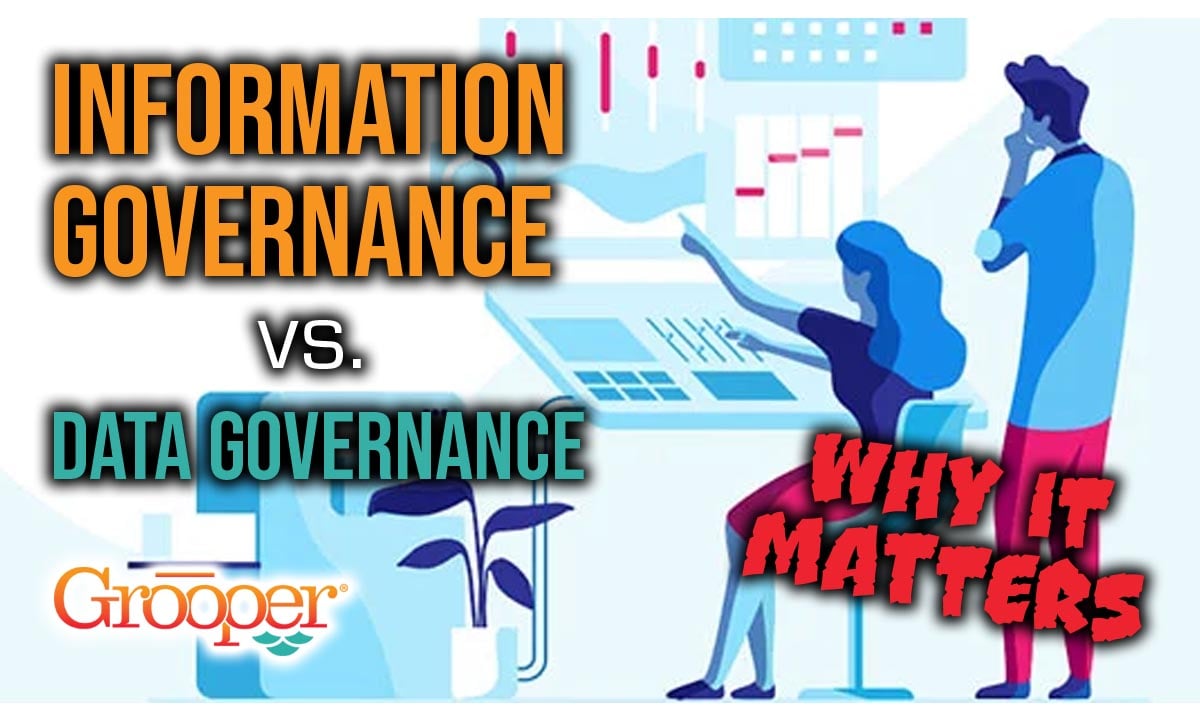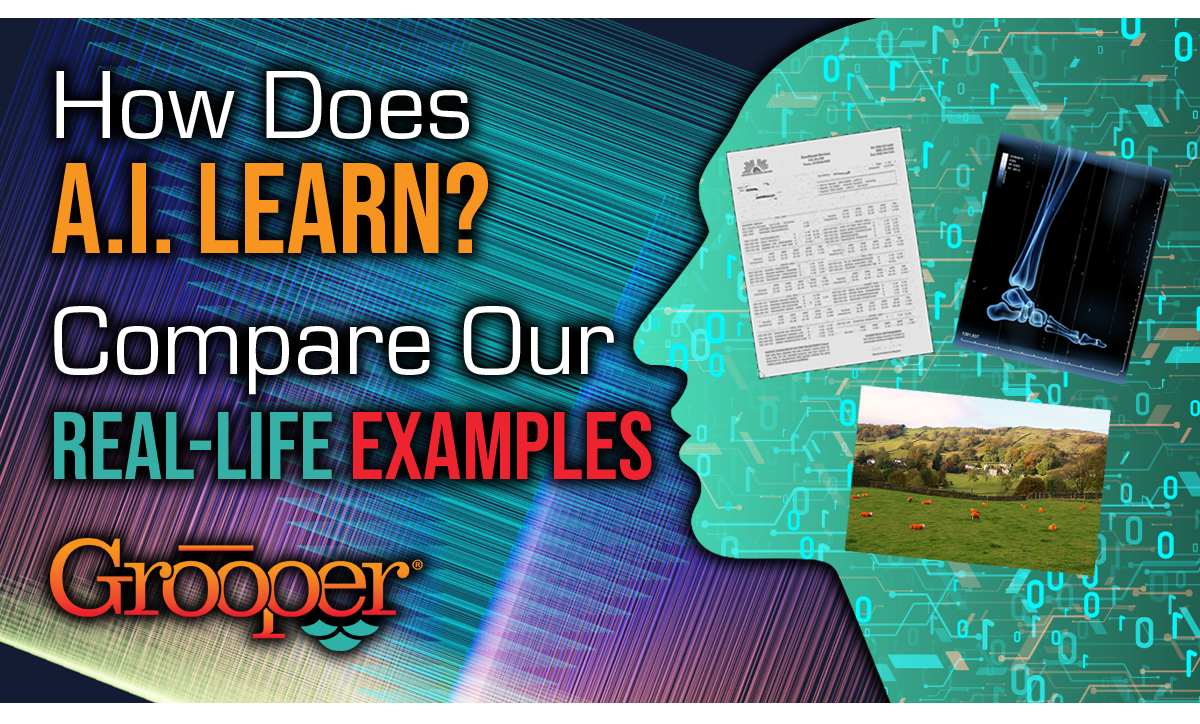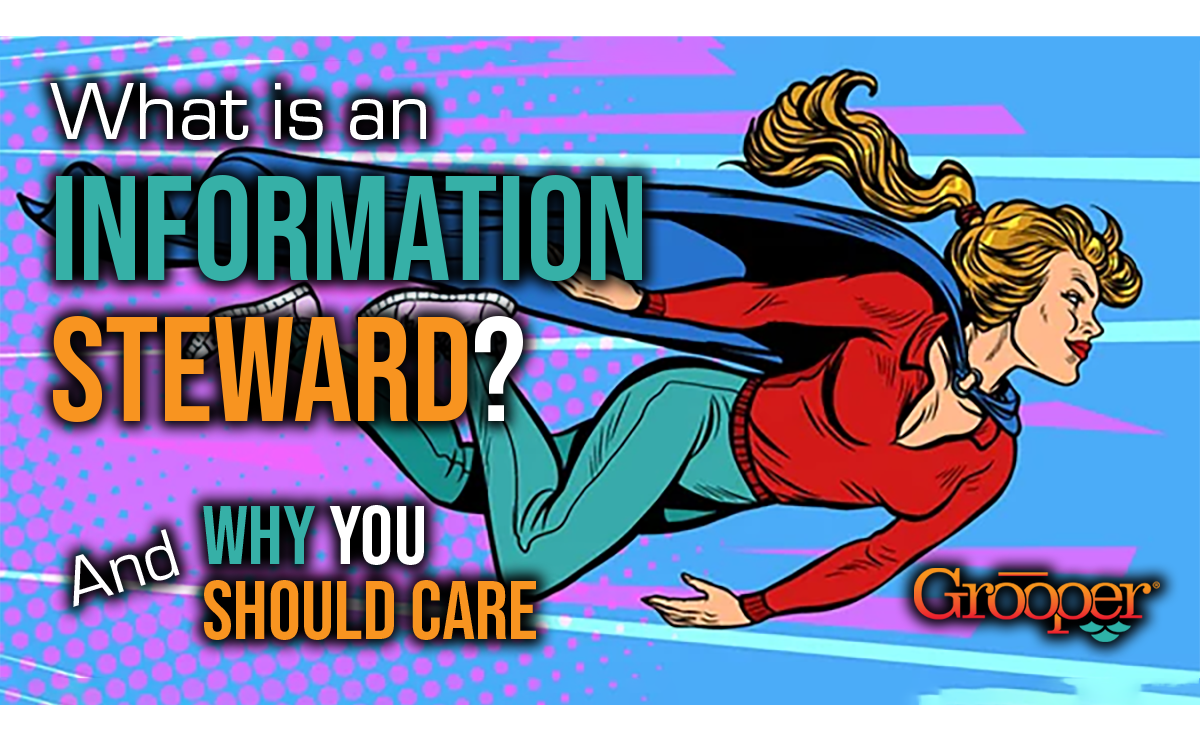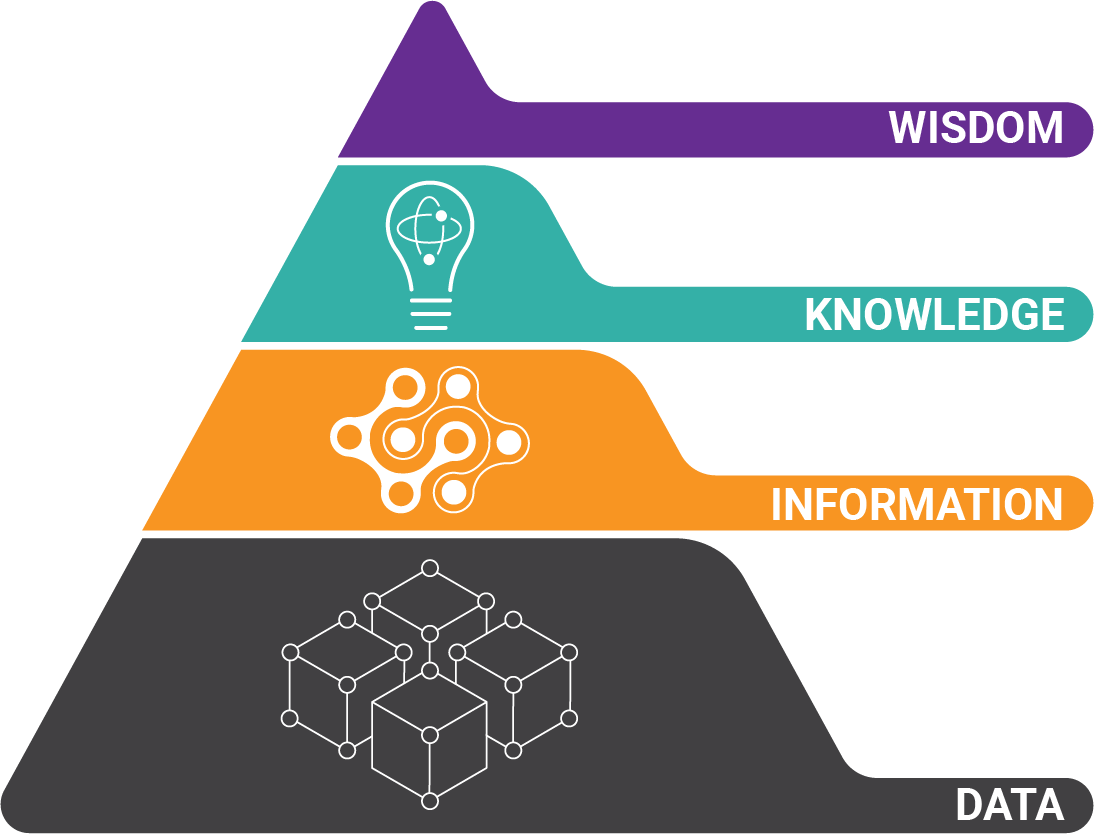It’s vital to really understand the clear differences between information governance vs. data governance.
Even though they’re two of the most frequently used terms in the records and information management (RIM) industry, the contrasts and realities of information governance vs. data governance are widely misunderstood. Both data governance and information governance are categories under the broader umbrella of RIM, but they’re regularly used in place of each other or confused as the same thing. Though they do complement one another, they have very big differences.
Information Governance vs Data Governance
Information governance is the big picture view or structure that data fits into.
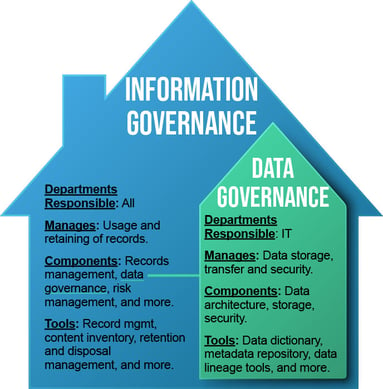 Information governance has a tendency to be linked with the business and compliance-centric concept to managing the usage and retaining of business records. The Information Governance Initiative defines the governance of information as: “the activities and technologies that organizations employ to maximize the value of their information while minimizing associated risks and costs.”
Information governance has a tendency to be linked with the business and compliance-centric concept to managing the usage and retaining of business records. The Information Governance Initiative defines the governance of information as: “the activities and technologies that organizations employ to maximize the value of their information while minimizing associated risks and costs.”
Information governance involves both unstructured and structured data alike. Its approaches include: info classification, managing the life cycle of information, how to accessing info, and electronic discovery.
On the other end, data governance is primarily an IT department responsibility. Data governance involves all data, both structured and unstructured, as it equates to data transfer and it's storage. Elements required in data governance include data loss mitigation, master data management, securing data and data service levels.
Results of Great Data Governance
The result of effective data governance is data that is true, accurate, and trustworthy. This is where using master data management tools and techniques comes into play.
In real life, data governance is responsible for data on a more granular level. It creates a "single version of the truth" by providing the following information quality activities:
- Data cleansing
- Data de-duplication
- Business-rules based data policies
- Implementing controls at the root level of data acquisition
Data governance is responsible for creating trustworthy and accurate data reporting that result in practical (potentially life-saving) business conclusions.
Table of Contents:
Why Understanding the Difference of Information vs Data Governance is Important
It is important to understand the relationship between information governance vs data governance, and master data management to make the best use of data.
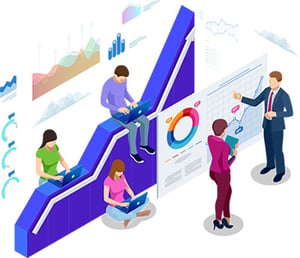
Simply storing information without a detailed road map (information governance) for how the data can and should be used is not enough. And without a plan for what data is important and how it will be trusted (data governance), you are setting yourself up for disaster.
Instead, consider the following thoughts about your data:
- How does data benefit the entire company?
- What core business processes or outcomes hinge on accurate data?
- What innovations will not happen without new data?
- What data can be re-used throughout the organization?
- How much time and energy is wasted by inefficient data practices?
- Who is responsible for the usefulness of data?
- What tools do we have or need for governance?
I get to work with many companies who are on the leading edge of innovating processes and workflows with data
Want to know what makes them successful? Here's what I've observed:
 They are more strategic in their planning. They align overall company vision with very specific business use-cases and ensure that IT and business initiatives are in harmony.
They are more strategic in their planning. They align overall company vision with very specific business use-cases and ensure that IT and business initiatives are in harmony.- Without exception, they commit to a formal process for data-driven decision making. And by setting up feedback loops, they see continual, and faster improvement.
- They’re proactive with change management. By socializing their ideas through various internal channels, they get buy-in from everyone affected. This allows them to track progress and predict their successes.
- They crave feedback from users and process outcomes. By measuring performance, they drive improvements through necessary process and workflow changes.
- They execute better. And sometimes with an almost fiendish desire for optimization. By paying close attention to changing business environments, they’re quick to implement changes to the infrastructure required for data-driven results.
Why is Information Governance Important?
Data is an asset. While you may not be able to show it on the books (yet), companies who figure out how to productize and commercialize their data are more profitable. They've discovered how to maximize the value of their data.
In our industry, we call this Enterprise Information Management (EIM), or Information Governance. It’s a well-coordinated initiative that spans business units and time. It’s not a one-off project: you can’t hire it, or buy it, but you can achieve it!
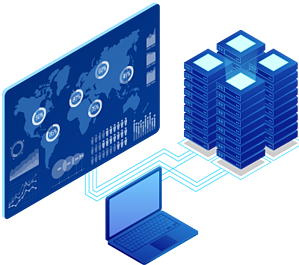 Successful EIM / information governance initiatives start off small. It seems that by limiting the scope, silos of information and processes are easier to deal with.
Successful EIM / information governance initiatives start off small. It seems that by limiting the scope, silos of information and processes are easier to deal with.
You have to look at your organization as a whole and ask yourself “What are our information management capabilities? And how willing are key people to move away from current data management practices and tools?”
Your dream of effectively managing data will be a reality. It simply takes the right resources and a measured approach to get there.
To help you understand what healthy information governance looks like, here are the basic building blocks:
- Accountability for the creation, storage, and use of data
- Clearly defined business value of data
- Regulation, legal responsibilities, and risk taken into consideration
- Business goals tied back to data
You need clearly developed policies, controls, and stakeholders assigned to each of these areas.
How Do You Compare When it Comes to Data Governance and Information Governance?
Many companies today are more reactive to governance initiatives. They operate more-or-less from a short-sighted standpoint of solving one-off information-related problems.
 Lack of competitiveness or experiencing business losses seem to be the main drivers to becoming more proactive with information and data governance.
Lack of competitiveness or experiencing business losses seem to be the main drivers to becoming more proactive with information and data governance.
What you’re shooting for are enterprise-wide governance initiatives. You’ll know you’re getting closer as data management becomes more aligned throughout the organization’s software applications, processes, and strategic initiatives.
Data governance and information governance is the path to true data efficiency and getting the most out of it requires a lot of planning. You have to ensure that you’re creating an opportunity that capitalizes the business value of data.
It’s not just about sharing information or efficiency gains. Remember, the goal is productizing and commercializing your data. This is a radical new concept that drives innovation and revenue growth.
Your governance programs will be as unique as the processes and products that are a part of your current success.
7 Tips for Information and Data Governance Success
Research firm Gartner, Inc. suggests 7 building blocks for success. They are:
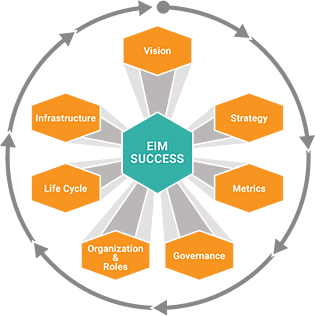
1. Get a Vision of Where You Want To Be
So what’s the big picture view? Can you see how information governance will transform data into a legitimate asset that fuels enterprise-wide goals?
Maybe you can relate to one of these statements:
- I agree that information is power, but it’s locked away in silos – we argue about a single-source-of-truth
- Our culture and leadership just keeps getting in the way of IT’s attempts at information management
- We encourage information-availability across silos and applications because it streamlines product development and customer support
- Leadership is championing information management best practices, and we’re leveraging data for enhanced analytics and fueling innovation
- Our business strategy is entirely depending on information management, and we view data as one of our most important products
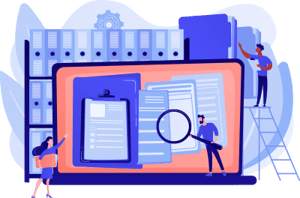 Regardless of where you are in your journey, it’s critical to maintain a vision for where you need to go.
Regardless of where you are in your journey, it’s critical to maintain a vision for where you need to go.
Your organization’s goals will be nearly impossible to achieve without a vision of how the integration of data, people, and processes drives success. You need buy-in from all areas of the organization, especially senior leadership.
A practical way to get started is to pick a business mission that clearly benefits from information governance and build out a strategy from there.
2. Create a Data Strategy that Matches Business Outcomes
Your roadmap to success must include sponsorship from organizational leaders. And you’ve got to build a plan that works.
This is the execution I mentioned that sets companies apart. See if one of the scenarios below matches where you’re at:
- I don’t know what data we have because it’s hoarded as a source of power, and leadership doesn’t seem to care
- We do share data…eventually, but only when departments are required to collaborate on projects
- We have a Chief Data Officer who is championing information management and the roadmap to get us there
- Our individual departments are viewed as data-centers with all the resources needed to support our EIM vision
- Data and analytics is an integral component of our organization's top-level strategy, and data is considered a corporate asset
To execute on strategy, you’ll need strong data and analytics leadership who understands that advances in technology will spur significant future economic growth. Responsibility for managing your company’s data must be clearly defined and supported.
 Articulating strategy in terms of business outcome is key. For example, business growth, profits, cost and performance optimization, efficiency, compliance, and risk management.
Articulating strategy in terms of business outcome is key. For example, business growth, profits, cost and performance optimization, efficiency, compliance, and risk management.
3. Use Metrics to Show Organizational Improvement
As Peter Drucker so famously said, “If you can’t measure it, you can’t improve it.” And, as W. Edwards Deming said, “In God we trust, all others must bring data.”
These two quotes sum it up.
You must be able to measure your performance. What metrics and goals do you have for information management? See if you can relate:
- We aren’t really tracking anything, and what we do measure is purely subjective and has little organizational value
- We invest very little in financial metrics but do use some basic stats to justify certain expenses
- The metrics we track are mainly related to tracking project efficiency; they don’t directly support overall business strategy
- We track distinct metrics for product quality, financial health, and risk, and tie this information to business value
- Intended business outcome is directly tied to information management related metrics
The right metrics for information and data governance must tie back to budgeting, return on investment, and supporting your company’s top-line goals.
How will you show that information management improvements directly affect overall organizational performance?
4. Understand What Your Information Governance Looks Like Right Now
Governing this information is t's more than just ‘store everything!’
A healthy system includes a documented plan for how decisions are made regarding your organization’s data.
How is it acquired or created, stored, archived, or deleted, and how will it be used? And for a plan to be successful, how it ties back to enterprise goals and processes is important.
Want to test your information governance? See where you fit in below:
- We mostly govern our data based on industry regulations, and we don’t have a single-source-of-truth for the majority of our data
- Each department controls their data silos without a central policy or plan
- We’ve identified core information assets and integrate some data / metadata with a goal of structuring additional types of data
- We have an information governance program which provides quality data for creating better business outcomes
- We’ve fully adopted EIM, all information is fully inventoried and focus more on the value of data than quality
Information governance is more than a policy or decision-making framework. Its ability to move an organization to the point where data priorities are based on business need versus IT or regulatory requirements is startlingly powerful. You must also consider how to actively enforce it.
5. Figure Out Organization and Roles
The reason focusing on organization and roles is so important is that it helps establish data stewardship as a business-led initiative.
 In some organizations, the IT department has the primary accountability for information governance. A successful EIM/IG program requires a healthy cross-section of skills and perspectives from the entire enterprise.
In some organizations, the IT department has the primary accountability for information governance. A successful EIM/IG program requires a healthy cross-section of skills and perspectives from the entire enterprise.
Success happens when governance moves beyond the realm of database administrators to a more centralized and controlling role such as a Chief Data Officer. This person will lead the efforts and specify additional roles like information architects and data curators.
And as the business value of data fully emerges, the creation of an information product manager will ensure even greater focus on productizing and commercializing your data.
6. What Should Your Information Life Cycle Look Like?
If information is an asset, it must have a life cycle. When data is simply stored in silos and integrated as needed, its value is uncertain.
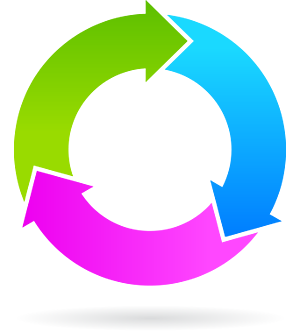 This approach adds regulatory risk from accidental or improper handling of data. But more than anything, it prevents your organization from realizing its full potential.
This approach adds regulatory risk from accidental or improper handling of data. But more than anything, it prevents your organization from realizing its full potential.
Information life cycles should be business-centric processes or detached IT workflows. By optimizing the value of information across the enterprise, you ensure that data is fully managed according to its business value. This also reduces risk by creating a defensible program for the retention or disposal of information.
Your processes should include the actions necessary to assure ongoing data maintenance and quality management.
7. Create an Optimal Data Governance Infrastructure
As a highly valued asset being stored and transferred to and from the enterprise, your information requires a highly optimized infrastructure.
Disparate, application-specific technologies limit the performance and interoperability of data.
DID YOU KNKOW? Weaknesses in infrastructure create a ripe environment for reactive IT spending, misuse of data, and worse – catastrophic data loss.
The optimal infrastructure is elastic – a dependency on dynamic cloud services. It is an environment where big data, analytics, content, and business intelligence all execute on purpose-built platforms. The strategic difference is focusing on data governance capability versus individual technology solutions or tools.
Information Governance vs Data Governance, In Summary:
Information and data governance is more than a single decision, the initiative of a group within your organization, or the implementation of new technology.
 Your biggest hurdles will be related to internal politics, and departmental silos.
Your biggest hurdles will be related to internal politics, and departmental silos.
The clear path forward is a determination to ensure that data delivers increasing value in organizational change, business outcomes, and innovation.
Focusing on the 7 building blocks for success will ensure long-term success.
